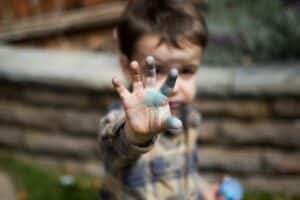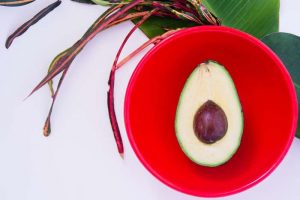In terms of your child’s nutrition, the scoop size is important! The amount of formula you feed your youngster based on how many scoops of formula per Oz you give them will determine how much nutrients they are receiving. This handy table can help you figure out how many scoops of formula to administer to a particular weight and age.

Are all Baby Formula Companies Created Equal?
The FDA regulates all baby foods to ensure that they are safe. These rules cover a wide range of nutrients, including minimum and maximum ranges for almost 40 elements, although formula recipes may vary considerably while still complying with these criteria.
Parents should select a baby formula according to their babies’ needs, even if the bottles are identical. Differences between baby formulas may be attributed to the manufacturers’ recipes, raw materials, and manufacturing processes. Other anomalies are due to health issues that were not intended.
How Much Should You Feed A Baby?
During your baby’s first year, their formula intake will vary greatly. Small bottles and nipple sizes are frequently required for newborns because their tummies grow quickly and need to be filled up fast. Because newborns’ tiny stomachs fill up rapidly, they must feed often.
If you find that your baby is sleeping for longer periods at night and isn’t particularly interested in eating during the day, make changes to their nighttime feedings.
How Many Scoops Of Formula Per Oz?
A range of volumes of baby formula is required to meet the various demands of the infant. The typical formula water proportion is 1 scoop of formula for every 2 ounces (60 milliliters) of water. This ratio, on the other hand, is only valid for immediate usage of infant formula.
Scoops Of Formula For 1 Oz
It’s simply more convenient to split a scoop in half instead of measuring it out with a spoon. Because their stomach capacity is limited, preemies require proportionally more formula than older babies.
Scoops Of Formula For 2 Oz
Begin with 1 ounce and increase by increments of 1 ounce until your baby needs more (newborns consume less than 2 oz at a time).
Scoops Of Formula For 3 Oz
You should make a 3 ounce concentrate and then dilute it with 3 fluid ounces of water.
Scoops Of Formula For 4 Oz and 5 Oz
To get a clear bottle at each session, stick with lower quantities.
Scoops Of Formula For 6 Oz
Mix the water with three regular scoops of infant formula powder.

Scoops Of Formula Per Oz For 8 Oz
If you’d like to store the recipe for a longer period, dilute it with water at a 1:1 ratio and feed your infant with 8oz concentrate.
Scoops Of Formula For 10 Oz and 20 Oz
You may use the 8 Oz technique for both storage and long-term usage, much like you can with the 6 Oz technique.
What Is The Best Way To Create The Formula?
Selecting The Correct Formula
If the solution becomes too thick, it’s more difficult to mix. Keep this in mind if you’re looking for eco-friendly products.
Open The Formula Pack
Metal tins are used to make the majority of baby formula bags, and you may use a knife to pry the lid open with some pressure.
Prepare For The Best Temperature
Babies have a certain taste that they are accustomed to, and it is frequently what they prefer. If your kid has been fed warm formula, he or she will want a heated bottle rather than a chilly one.
Water is poured in first, then the solution.
If you’re scooping powder, add it after you’ve added the hot water. The powder will be more effectively sanitized, and mixing it will be much simpler if you do so. You don’t want any clumps of powder in your milk. This may raise the risk of choking in infants.
Use of Cow’s Milk
Instead of employing a commercial cow’s milk or another comparable substance as a solvent for baby formula, use the genuine thing. Commercial cow’s milk and dairy products are harmful to children and should not be consumed at the same time.
Formula for Babies: How to Prepare It
1. The Powdered Formula
The ratio of powder to liquid varies based on the brand. One scoop for every two fluid ounces of water is a typical formula combination. Here’s how to make safe formula:
- Fill the bottle with water and top it off with the pre-measured amount.
- Fill the baby’s bottle with formula.
- Cap the bottle and give it a good shake.
2. Concentrated Liquid Formula
If you want to use one, you’ll need to combine a liquid concentrate infant formula with water. For this example, 1 ounce of liquid concentrate for every 1 ounce of water should be gently shaken together.
3. Formulation that is ready-to-feed
Ready to Feed mixing Formula is simple to make; there are no measures or mixing required. Simply fill your baby bottle with the mixture, and you’re ready to go.
What Does Baby Developing Mean?
1. Newborn Or Neonatal
Babies are in the neonatal phase for the first four weeks after birth. Newborns are extremely impressionable and respond to everything that goes on around them. Genetic abnormalities and fetal alcohol syndrome can now be seen during the neonatal period.
2. Baby
The newborn stage comes to an end, and the infant period begins, which lasts up to a year. A kid nearly doubles in weight during the first four months after birth.
3. Child
Your toddler is between one and four years old. Solid food may be offered to a toddler for the first time. It’s critical to stop offering baby formula to toddlers since it doesn’t meet all of their nutritional needs.
4. Premature Infants
Premature infants require specialized food services and diets to survive. To assist the baby during this rapid growth period, premature babies may use special baby formulas.
Frequently Asked Questions
Q1: What if I inadvertently put in two scoops instead of one?
Ans: Typically, an extra scoop is not a significant problem. However, if the formula is too thick, the baby may suffer from dehydration and constipation.
Q2: How can I tell if my baby is on the incorrect formula?
Ans: If you observe any serious symptoms following nursing, such as an allergic reaction, vomiting, or constipation, seek medical attention.
Q3: What if you don’t have enough water to boil the formula?
Ans: Boiling water destroys the germs that can cause illness in the infant, which aids in keeping it healthy. If you do not boil the water, there is a greater chance of ailments and indigestion.
Q4: Is it possible to use half scoops of formula?
Ans: It’s not a good idea to save money by using half scoops of formula. Instead, you should use full scoops of formula rather than extra scoops or half scoops. You may either add the unit to the amount or weigh it out with a kitchen scale.
Q5: What is the scoop size of the formula?
Ans: The majority of manufacturers fertilize with the same recipe: 1 scoop of powder for every 2 oz.
Q6: How much formula should you use in 60 and 100 mL of water?
Ans: For 60 ml of water and 50 ml of formula, you’ll need 30 ml or two scoops; for 100 mn of water, you’ll require 30 mn or two scoops and three and a half scoops.
Q7: What is the difference between 28 Oz and 32 Oz?
Ans: For 28 ounces, you’ll need 14 scoops of formula, and for 32 ounces, 16 scoops.
Conclusion
Choosing the right amount of formula for your child is important. The scoop size determines how much formula you get per Oz. To ensure that you’re providing a safe and nutritious drink to your baby, you must know how many scoops of formula per oz you must give. Your youngster’s nutritional requirements may have a significant influence on them.
Some newborns only require more food, while others just require less. The information in the preceding post can assist you in determining how many scoops of formula to give your baby per Oz. You’ll figure out the best techniques for your kid to get the finest feasible strategy sooner or later!







